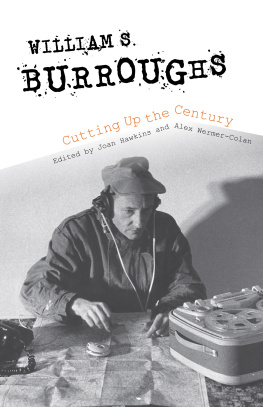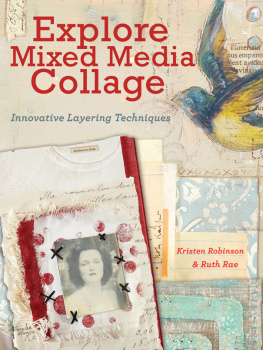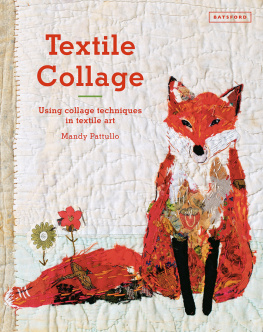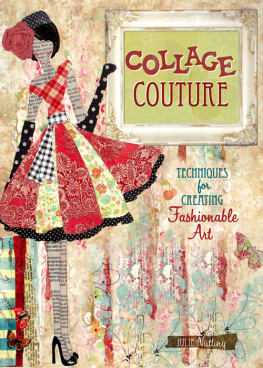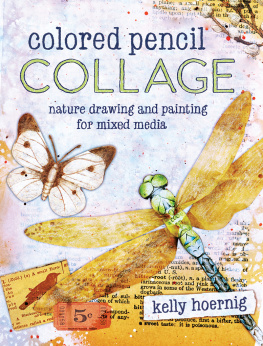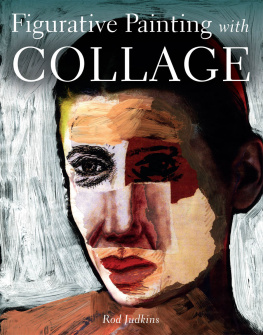COLLAGE IN TWENTIETH-CENTURY ART, LITERATURE, AND CULTURE
Emphasizing the diversity of twentieth-century collage practices, Rona Crans book explores the role that it played in the work of Joseph Cornell, William Burroughs, Frank OHara, and Bob Dylan. For all four, collage was an important creative catalyst, employed cathartically, aggressively, and experimentally. Collages catalytic effect, Cran argues, enabled each to overcome a potentially destabilizing crisis in representation. Cornell, convinced that he was an artist and yet hampered by his inability to draw or paint, used collage to gain access to the art world and to show what he was capable of given the right medium. Burroughs formal problems with linear composition were turned to his advantage by collage, which enabled him to move beyond narrative and chronological requirement. OHara used collage to navigate an effective path between plastic art and literature, and to choose the facets of each which best suited his compositional style. Bob Dylans self-conscious application of collage techniques elevated his brand of rock-and-roll to a level of heightened aestheticism. Throughout her book, Cran shows that to delineate collage stringently as one thing or another is to severely limit our understanding of the work of the artists and writers who came to use it in non-traditional ways.
For Martin
Collage in Twentieth-Century Art, Literature, and Culture
Joseph Cornell, William Burroughs, Frank OHara, and Bob Dylan
RONA CRAN
ASHGATE
Rona Cran 2014
All rights reserved. No part of this publication may be reproduced, stored in a retrieval system or transmitted in any form or by any means, electronic, mechanical, photocopying, recording or otherwise without the prior permission of the publisher.
Rona Cran has asserted her right under the Copyright, Designs and Patents Act, 1988, to be identified as the author of this work.
Published by
Ashgate Publishing Limited
Wey Court East
Union Road
Farnham
Surrey, GU9 7PT
England
Ashgate Publishing Company
110 Cherry Street
Suite 3-1
Burlington, VT 05401-3818
USA
www.ashgate.com
British Library Cataloguing in Publication Data
A catalogue record for this book is available from the British Library
The Library of Congress has cataloged the printed edition as follows:
Cran, Rona.
Collage in Twentieth-Century Art, Literature, and Culture: Joseph Cornell, William Burroughs, Frank OHara, and Bob Dylan / by Rona Cran.
pages cm
Includes bibliographical references and index.
ISBN 978-1-4724-3096-0 (hardcover: alk. paper)ISBN 978-1-4724-4684-8 (ebook)ISBN 978-1-4724-4685-5 (epub)
1. American literature20th centuryHistory and criticism. 2. Collage. 3. Art and literature. 4. Art, American20th centuryThemes, motives. I. Title.
PS169.A88C73 2014
810.9357dc23
2014013561
ISBN 9781472430960 (hbk)
ISBN 9781472446848 (ebk-PDF)
ISBN 9781472446855 (ebk-ePUB)
Contents
List of Figures
Acknowledgements
I am indebted to many wonderful people who have helped this book become a reality, not least Ann Donahue, who agreed to publish it, and Kirsten Giebutowski, for her editorial assistance. I am deeply grateful to Mark Ford, Hugh Stevens, J.D. Rhodes, Pat Palmer, Kasia Boddy, and Robert Hampson for their invaluable academic expertise and support, to Rebecca Robertson and Lucy Griffiths for indulging and cultivating my teenage love of literature, and to John Ashbery for his generosity. For their endless encouragement (and for filling our home with books), I thank my parents, Berna and Hugh Cran. Ive been aided inestimably by the support and sense of humour of my sisters, Sophie and Kim, and my friends particularly Amy Clarke, who nobly volunteered to read my manuscript, and Dolla Hutchinson, who persuaded me to run a marathon and thus ensured my enduring sense of perspective. I would also like to thank the staff at the British Library, the Columbia University Rare Book and Manuscript Library, the Archives of American Art, the Museum of Modern Art, the Tibor de Nagy Gallery, the Berg Collection at the New York Public Library, and the Wylie Agency. This book is dedicated to Martin Spychal and all three Trawler dynasties, without whom it could not have been started, let alone finished.
Quotations from unpublished letters of William Burroughs, courtesy of The Henry W. and Albert A. Berg Collection of English and American Literature, The New York Public Library, Astor, Lenox, and Tilden Foundations. Copyright The William S. Burroughs Trust.
Quotations from unpublished letters of William Burroughs courtesy of the Rare Book and Manuscript Library at Columbia University. Copyright The William S. Burroughs Trust.
Excerpts from They Dream Only of America from The Tennis Court Oath 1962 by John Ashbery. Reprinted by permission of Wesleyan University Press.
Six lines excerpted from Howl on p. 213, five from Wichita Vortex Sutra on p. 215, from Collected Poems 19471997 by Allen Ginsberg. Copyright 2006 by the Allen Ginsberg Trust. Reprinted by permission of HarperCollins Publishers.
Abbreviations
The following short titles and the relevant editions used are:
William Burroughs
|
|---|
DF | Dead Fingers Talk (1963) (London: Tandem, 1970) |
J | Junky (1953), ed. Oliver Harris (London: Penguin, 2003) |
NE | Nova Express (1964) (London: Granada, 1978) |
NL | Naked Lunch: The Restored Text (1959), ed. James Grauerholz and Barry Miles (London: Harper Perennial, 2005) |
Q | Queer, ed. Oliver Harris (1985) (London: Penguin, 2010) |
SM | The Soft Machine (1961) (London: Paladin, 1986) |
TE | The Ticket That Exploded (1962) (London: Paladin, 1987) |
YL | The Yage Letters Redux (1963), ed. Oliver Harris (San Francisco: City Lights, 2006) |
Note: I have used the established titles of Naked Lunch and Junky, as opposed to the original titles of The Naked Lunch and Junkie, except in quotations.
Frank OHara
|
|---|
CP | The Collected Poems of Frank OHara, ed. Donald Allen, introduction by John Ashbery (Berkeley: University of California Press, 1995 [1971]) |
SS | Standing Still and Walking in New York, ed. Donald Allen (Bolinas: Grey Fox Press, 1975) |
Spelling and grammatical errors within letters, diary entries, and notes have broadly been preserved.
Introduction: Catalysing Encounters
Moreover it called into question personality, talent, artistic property, and all sorts of other ideas that comforted the tranquil sensibility of cretinized brains. I wish to speak of that which one calls collage for purposes of simplicity, even though the use of glue is only one of the characteristics of this operation and not an essential characteristic. Without doubt this subject contains within something that frightens the spirits.
Louis Aragon
Si ce sont les plumes qui font le plumage, ce nest pas la colle qui fait le collage.
Max Ernst
What collage achieves, then, is a metalanguage of the visual. It can talk about space without employing it; it can figure the figure through the constant superimposition of grounds; it can speak in terms of light and shade through the subterfuge of a written text As a system, collage inaugurates a play of differences which is both about and sustained by an absent origin.
Next page

